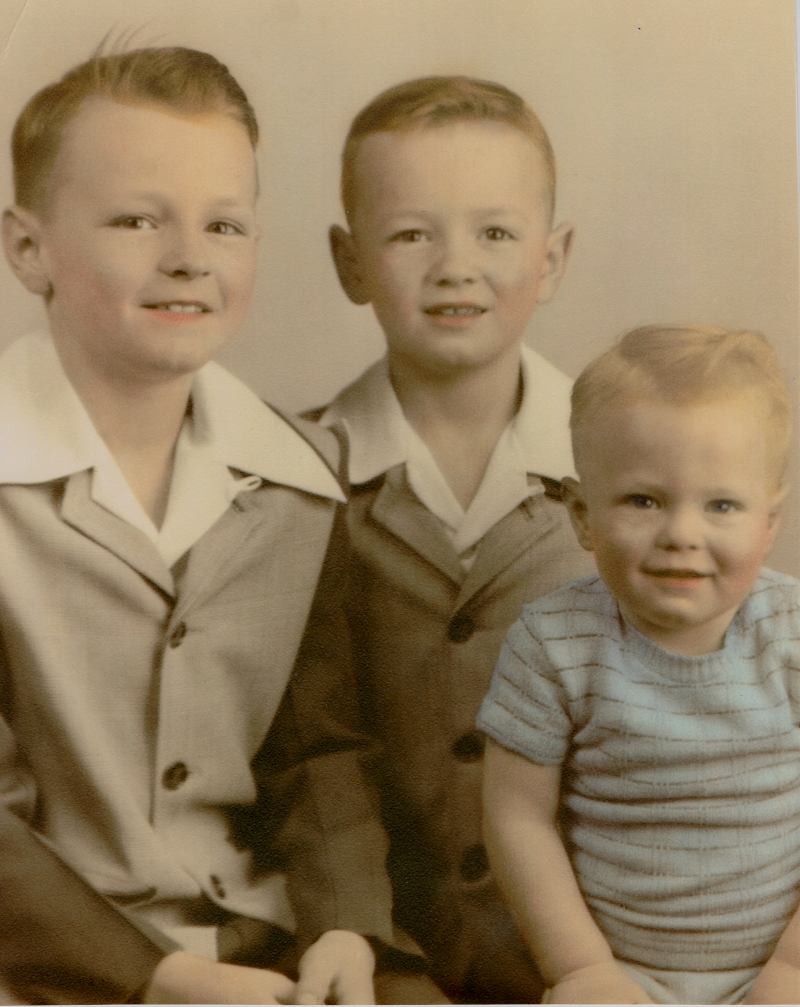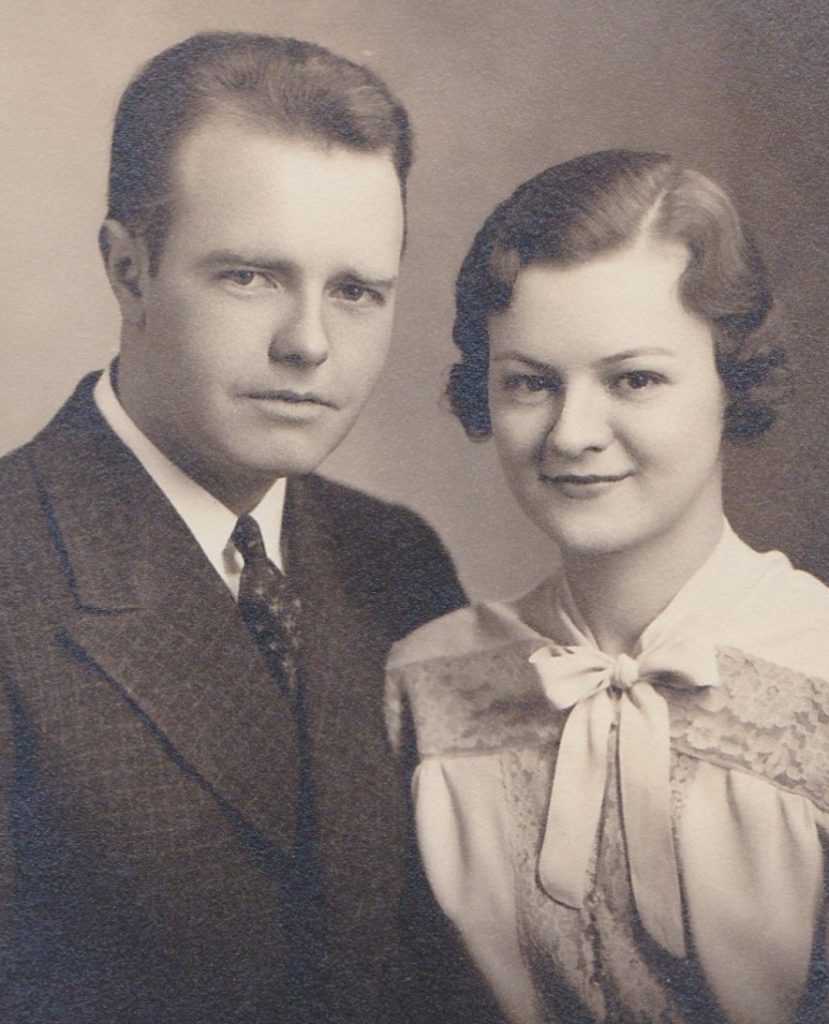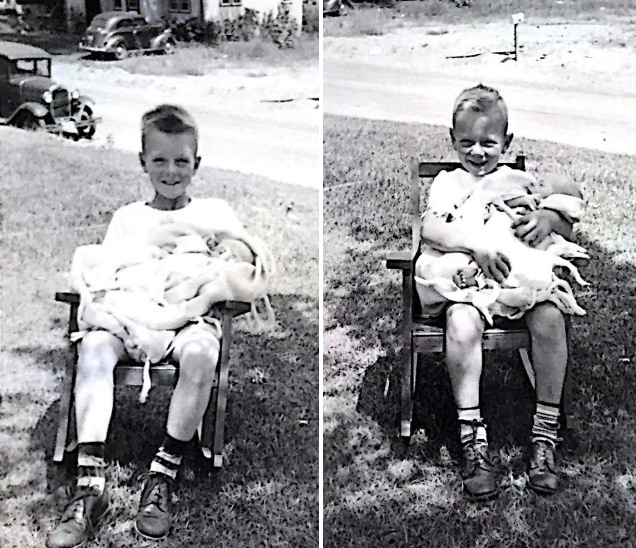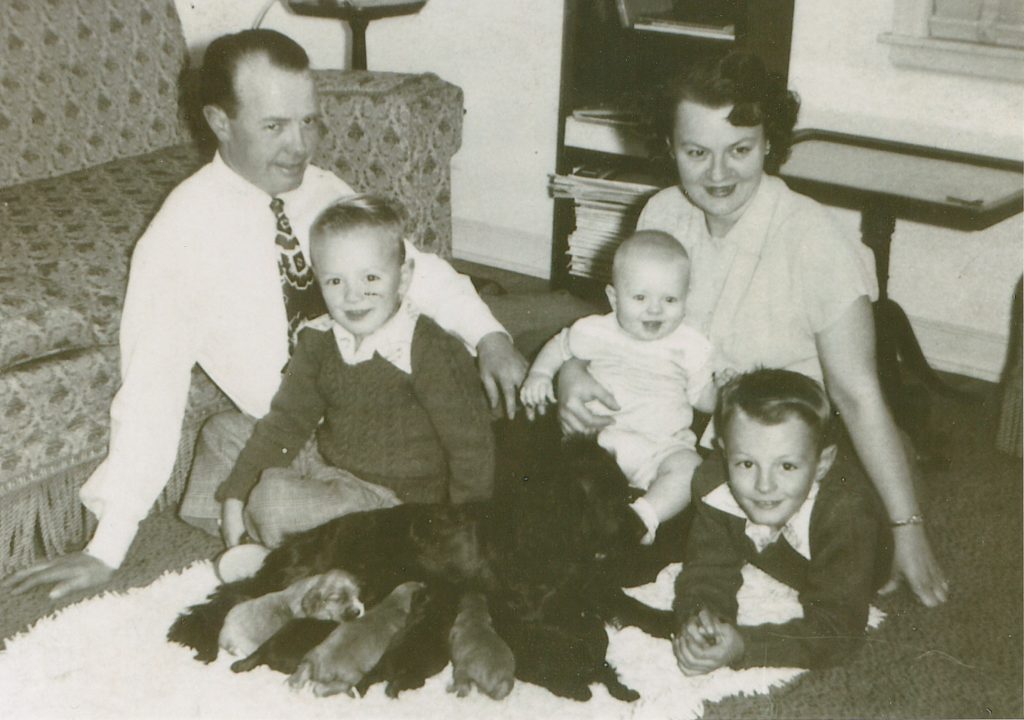All three sons of Obed and Verona Lindgren had paper routes in Richfield, MN in the 1950s. Bruce was the first to deliver the Minneapolis Star to about 60 homes located in the blocks between Lyndale and Harriet avenues and from 70th to 72nd streets. The papers, wired together in bundles, were dropped at the southeast corner of 70th and Harriet about 3pm where Bruce would cut the wire of a bundle with the nipper he carried in his pocket. Arriving on his bike, he would fold the paper and secure them in a cloth shoulder bag, which was either strapped to the rear fender of his bike or over a shoulder. The route proceeded South on Harriet, North on the East side of Garfield, then South on the West side of Garfield. and then North on Augsburg avenue to end with delivery to about three houses on the West side of Lyndale.
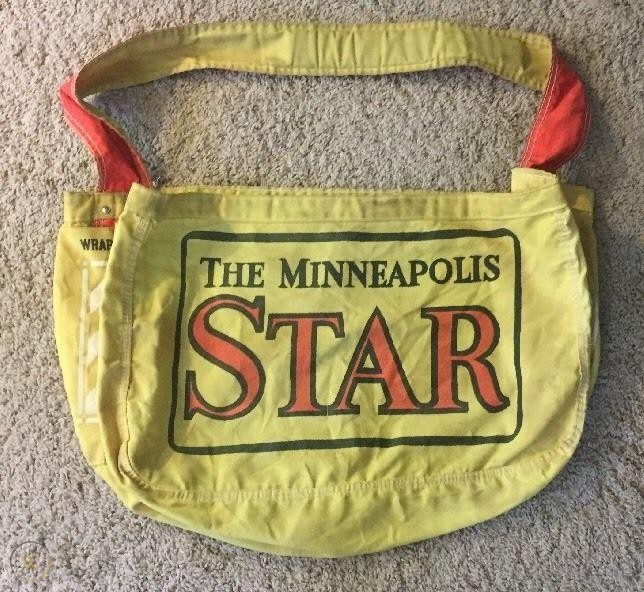
Bruce’s school friend Victor Spano had a morning Minneapolis Tribute route, and during family vacations, Bruce would substitute for Victor, which required getting up around 4:30am to deliver the papers befor 6-6:30am. That route was in the neighborhood around 76th Street between Lyndale Avenue and the RR tracks. There were relatively few customers compared with the afternoon Star, so delivery took longer even though the number of papers was fewer than on our routes.
Every once in awhile, Bruce’s friends, usually Terry Conway or Brain Carlson, would help out. This usually happened when all of his friends wanted to do something during normal paper delivery hours in the summer, or if they had been doing something fun and the paper delivery was in some danger of being late. People wanted their afternoon paper before 6pm. It was also not infrequent that Bruce’s brothers would pitch in to help. This was particularly true for delivery of the Sunday morning papers. Bruce’s mother would usually drive the car and with papers in the trunk, Bruce and his brothers, Dave and Steve would hand carry enough papers for all houses on a block and run from door to door making delivery. They would then meet the car at the end of the block for another arm-load of papers for the next block. During many years Dave also had a route and both routes would be done this way on Sunday morning.
Dave sent the following along as an email: I remember the dog incidents for sure. Joey and Jimmy were a big help on occasion with the big route especially. I can’t remember having a problem with backups for sickness, other conflicts to interfere with the on-time delivery–we must have worked that out between the three of us and the Carlsons. I’ll bet Dad had to, on occasion, deliver the papers. Collecting was the biggest pain and the cent and a third come (maybe 3 cents for Sunday) back for the daily effort per paper delivered–helped my math skills. I can’t remember how and when the employment ended–Krispy Kreme, or Red Owl, or ?? The Doodle Bug (check it out here) was a major time saver and I can’t ever remember any complaints voiced for that questionable maneuver. I don’t remember giving the keys to the Doodle Bug to either Bruce or Steve, but think they used it on occasion–not sure. I don’t remember the amount of time start to finish to complete the route every day (walking or ever calculated miles walked or calories burned) and I think it was basically the afternoon and Sunday paper–never morning on weekdays. The manager, as I remember, was pretty easy to work with, but I don’t know if he took the collection money or how that was handled. Organization to the little receipts given to the customer was a simple and foolproof way to audit the money end of things. I liked–not sure if either Bruce or Steve did–the coin changer on my belt to quickly give the customer change for ones, fives, or maybe even tens. The manager took the orders for bundles of papers needed each day–I think. I don’t remember a major glitch in getting the papers out within the expected and established time frame, but that detail slips completely. It seems like there would have been some snow or rainstorm where a delay wasn’t a problem on deadlines. I think we had to stuff the papers in plastic (back in Bruce’s day there were no plastic bags) if rain was anticipated. Generally, this is about all I remember other than more detail about the dogs. I’ll try and elaborate a little more on that later.
Since I (Steve) am the youngest and the last to have my own paper route, it fits nicely in this sequence. Needless to say, I learned a good deal about paper routes from both Bruce and Dave my two older brothers. However, it did not deter my desire for making money delivering papers in Richfield, Minnesota, USA.
In the fall of my first year at West Junior High School, a friend of mine broke his arm and needed to be replaced on his paper route which was also a Minneapolis Star delivery route to about 100 doors on Emerson Avenue and the east side of Fremont Avenue from 73rd to 78th Street. This included an apartment complex on Emerson Avenue at 77th and the Clover Leaf Motel which was a healthy hike through the “woods” on a well worn path from Fremont Avenue.
Fortunately, my Dad designed a trailer for my bike which allowed me to pick up all the papers at the “paper shack” on 75th and Lyndale and transport my bundles to an evergreen tree perfectly positioned for shelter at 75th and Emerson Avenue South. Incidentally, the tree is still standing today some sixty years from when we first got acquainted. Today, there is a wonderful little neighborhood park which my two children later enjoyed regularly.
This location was strategically located for me to carry enough papers in a sack like the one pictured above. Using a crisscross pattern heading south on Emerson, I carried a heavy bag of papers heading to the apartment complex.
For baseball fans, the apartment building was the baseball season home to MN Twins pitcher Camilo Pascual and his young family. I didn’t speak Spanish, but there was never a problem collecting from them. The apartment complex also was home to a number of Northwest Airlines Flight Attendants and while the swimming pool for the complex looked awfully inviting on many hot afternoon days, I never took up the invitation to use the pool to cool off.
The return trip heading north on Fremont Avenue started by walking down a long path through the woods to the Clover Leaf Motel which was then on the northeast corner of 494 and 35W. Even though I only delivered one paper to the east side of the Motel to the owners residence, I want everyone to know they always gave me a generous tip.
Monday-Saturday the routine was the same, but Sunday mornings my Parents would enthusiastically help out using the car. There were a few times over the two years where weather (or a cramped schedule) entitled me to some help, but it was rare.
Paper routes are a great learning experience and I am reminded of a passage from a book written by the Founder of Best Buy, Richard M. Schulze, where he recounts his experiences as a paperboy growing up in the Twin Cities. The Conclusion to his book (the last chapter) is only three pages, but is a wonderful story about a young man (Jeff) who came to the Schulze home on a Saturday to collect. Mr. Schulze provided some instructions to the young lad. The youngster told the story to his father who decided to invest in what was called then Sound of Music (later named Best Buy) and turned a $330 stock purchase into $34,000. As the father later told Mr. Schulze, “It paid for Jeff’s college education.” Page 285 in BECOMING THE BEST.
Best Buy’s Corporate Campus was built and opened in 2003 in Richfield. Thank-you Mr. Schulze!!! I enthusiastically supported building this addition to my hometown. Steven Obed Lindgren, President Emeritus, Richfield Chamber of Commerce

